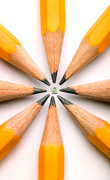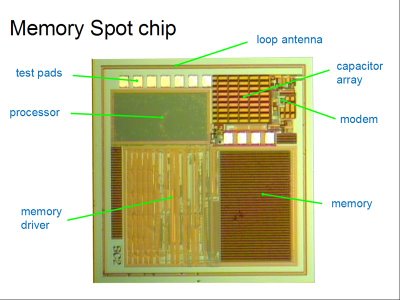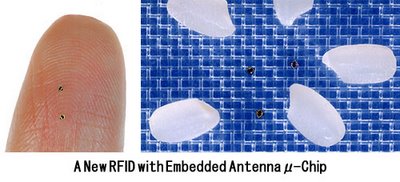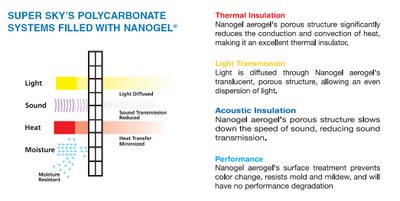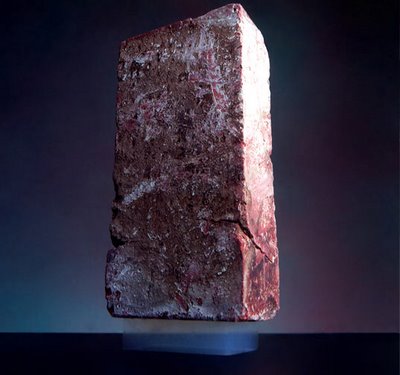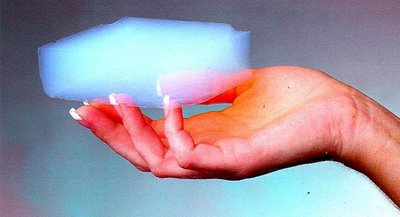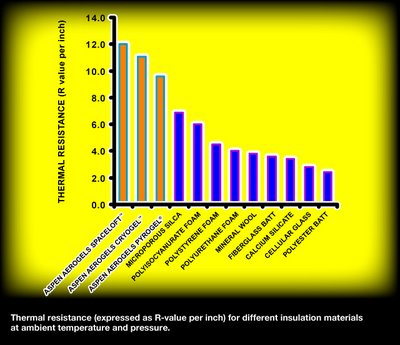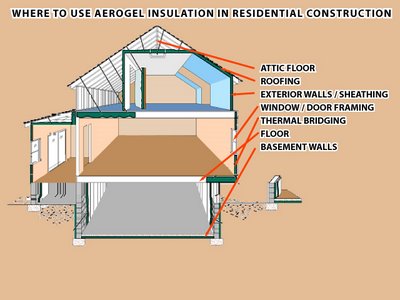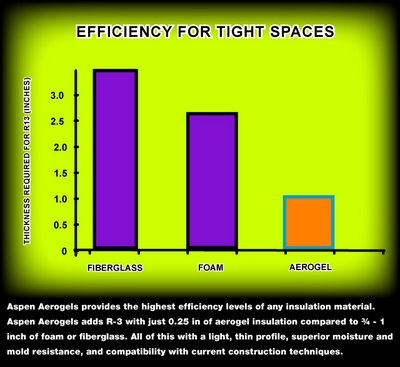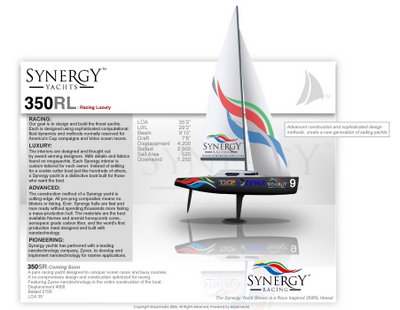Nanotech BSU
12.18.2006
BIOTECH:
Your mailbox was full, so here are the notes and I'll try to send them to you again later!
P3. Biotech is the use of microbial, animal, or plant cells or enzymes to synthesize, break down, or transform materials
Bio and nano are enabling technologies with applications in many industrial sectors
P5. Biotech is as old as bread and beer
The new biotech revolution began in the 70’s and early 80’s when scientists leaned to alter precisely the genetic constitution of living organisms
P7. Biotech applications and co’s in therapeutics, diagnostics, agriculture/forestry/horticulture, food, environment, chemical, equipment, bioprocess technology, enzyme technology, waste technology, renewable resources, healthcare
P11. 2/3 biotech funding is in healthcare (probably more now in energy)
Traditional biotech: beer (fermentation) new: genetically engineering human insulin
P13. Organisms are a convenient form for a biotech process to take place in (bioreactor) note utilitarian view of life- mostly microbes
P21. More than 10 times more energy is generated annually by photosynthesis than is consumed by humankind
P23. Lignocellulose is the most abundant and renewable natural resource available to humanity throughout the world (solar?) trees are composed mainly of lignocellulose, massive technological difficulties must be overcome before economic use may be made of this plentiful compound (corn cobs, oat hulls, straw, bagasse, wood wastes, sulphite liquor, paper wastes)- however, normally requires complex pretreatment involving reduction in particle size followed by various chemical or enzymic hydrolyses (energy intensive and costly)
Land plants produce 24 tonnes of cellulose per person per year, time will surely show that lignocellulose will be the most useful carbon source for biotech developments
P25. The largest proportion of total volume of waste matter is from animal rearing (feces, urine), then agricultural wastes, wastes from food industries, and domestic wastes
P31. Factors determining competitiveness of natural (biomass) and synthetic (fossil biomass) derived products: relative price of raw materials, quality/variability/regularity or supply and safety of raw materials, relative costs of chemical base material conversion compared to conversion of agricultural products, premium accorded be the market to ‘natural’ as compared to synthetic products and increasing requirement for products to be biodegradable
P33. Biotech has been around a very long time, but coenetic engineering (molecular manipulation of DNA and RNA) is only a few decades old
P43. Early genetic energy studies used E. coli and a special strain that has been developed that will only grow in labs
P49. Many bioproducts could be produced economically any other way (+: complex molecules, such as proteins and antibodies, cannot be produced by chemical means, bioconversions give higher yields, biological systems operate at lower temperatures near neutral pH, much greater specificity of catalytic reaction, can achieve exclusive production of an isomeric compound) (--: can be easily contaminated with foreign unwanted microorganisms, the desired product will usually be present in a complex product mixture requiring separation, need to provide handle and dispose of large volumes of water, bioprocesses are usually extremely slow when compared with conventional chemical processes)
P75. Enzyme of tergents could make good story p 78
P109. At least 25% of the world’s population currently suffers from hunger and malnutrition (shouldn’t that take priority over environment?)
P125. Many chronic diseases will most probably not have a single identifiable gene cause but rather arise from a complex, cascading series of biological events interacting with environmental factors
A considerable amount of raw material must be nearby for single cell protein production to be economical (true of bioprocin gen?)
P126. Biopharmaceuticals: recombinant protein drugs, recombinant vaccines, monoclonal antibodies
P127. Achieving regulatory approval for pharmaceuticals can cost millions, so products must have high sales potential
Biotech medical treatment: therapeutic products (hormones, proteins, antibodies), prenatal diagnosis of genetic diseases, vaccines, immunodiagnostic and DNA processes for disease ID, genetic therapy
P128. There is now little doubt that the incorporation of medically important antibodies into feed was led to increased spread of drug resistant microorganisms, increased shedding of dangerous salmonella bacteria in animal dung and the transfer of antibiotic residues into human food
P129. It is regrettable that most studies on antibiotics have been concerned with diseases prevalent in the developing nations, probably the reason lies with the economies of developing new drugs for countries with limited financial resources, malaria is the most common infectious disease in the world
Biotech may well make it possible to economically produce ‘orphan drugs’- drugs with specific needs but small profit return
P137. Gene therapy— “Undoubtedly, the most far reaching and controversial area of genetic engineering of humans is gene therapy. This is the treatment of disease by the transfer and expression of genetic material in a patient’s cells in order to restore normal cellular function. Is it, however, essential to distinguish between germ cell gene therapy and somatic cell gene therapy. In germ cell gene therapy changes are directed at the individual’s genetic make-up and can be passed on to the offspring. Ethics and practical wisdom ensures that this type to therapy will not be permitted in any country, in the foreseeable future. In contrast, in somatic cell gene therapy, functioning genes are introduced into body cells that lack them. The effects of the therapy are confined to the person undergoing the treatment and are not passes on to the offspring.”
P139. Complex multifactorial diseases like Parkinson’s, cancer can have complex interactions with environment, so gene therapy for them is a long way off
P143. Biotic- living
Abiotic- nonliving
Environmental biotech- the application of biological systems and processes in waste treatment and management
“It is the microbes in their multivarious forms that largely direct the orderly flow of materials and energy (biogeochemical cycles) through the world’s ecosystems by way of their immense and varied metabolic ecology is an extremely relevant scientific discipline with proven practical applications and must be seen as one of the most critical scientific approaches to environmental problems.”
“Organic chemicals that cannot easily be degraded by microorganisms, or are indeed totally resistant to attack lignin, for example, are termed recalcitrant. Xenobiotics are synthetic compounds not formed by natural biosynthetic process and, in many cases, can be recalcitrant. A xenobiotic compound is, therefore, a foreign substance in our ecosystem and may often have toxic effects. All environmental biotechnological processes make use of the metabolic (degradative and anabolic) activities of microorganisms, demonstrating, again, the indispensable nature of microbes in our ecosystem.”
P145. In volumetric terms biological treatment of domestic waste-waters and sewage in the industrialized nations is by far the largest biotechnological industry and the least recognized by lay people
“Controlled use of microorganisms has led to the virtual elimination of such waterborne diseases as typhoid, cholera, and dysentery in these communities. Yet, if water and sewage treatments are seriously interrupted, major epidemics may quickly develop, as witnessed in 1968 in Zermatt, Switzerland, where typhoid developed following the breakdown of the water treatment plant. Thus, not only does biotechnology generate a whole new range of useful products, it also plays an indispensable part, through water and sewage treatment processes, in the reduction of infectious diseases of humans and animals.”
P153. More then 12 million tonnes of oil are estimated to enter the sea each year
P157. Mining with microbes: 10% of the US copper, 300,000 tonnes annually worldwide, uranium too US 4,000 tonnes per year
P164. Two big advances in plant biotech: isolate plant cells and keep them alive and reproducing in suspension, develop cells into entire plants (cloning)
P165. We now manipulate plant cells and plants for virus elimination, strain selection, mutation, resistance to herbicides
Recombinant DNA we move DNA from one plant cell (or even other types of organisms) into cells of another
P166. Foreign genes can be inserted into bacterium plasmid DNA then integrated into plant genome “Ti Plasmid- derived vector”
Particle gun used to bombard plant cells with genes in the form of DNA- coated particles which penetrate cell walls and deliver DNA to nucleus
P167. Ti plasmids have also been used to insert ‘antisense genes’ in order t negate the functions of specific plant genes concerned with an undesirable phenotype
Genetic energy allows improved resistance to specific herbicides, insect pests and microbial diseases and improved post harvest characteristics
P168. Global estimate of losses due to plant diseases in 1987 was approximately $90 billion
P169. Flavr Savr Tomota- example of antisense gene energy (still marketed?)
P171. World production: harvested wood- 1.6 billion tonnes, paper- 200 million tones 1992
P173. First example of transfer of foreign gene across species by recombinant DNA was ‘super mouse’ (first transgenic animal) rat gene for growth hormone into mouse genome result- larger mouse
P174. Efforts to create transgenetic pigs, sheep and cattle only succeed about 1% of the time
Locating animals can be engineered to produce human proteins which can be used in pharmaceuticals (pharming)
P175. In 1980’s gene responsible for bovine growth hormone (somatotropin or BST) isolated and transferred to bacterial cells to produce large quantities of BST
Cows injected with BST show 10-30% increase in milk production (continued injections required to maintain yield)
“There is no evidence of increased concentrations of BST in the mild nor that the constituents of milk are in any way altered.”
P177. BST treated cows showed increased mastitis
P185. Almost 90% of all revenues from biotechnology come from the food and beverage sectors
P205. European patent office: “To find a substance freely occurrence in nature is… mere discovery and therefore unpatentable. However, if a substance found in nature has first to be isolated from its surroundings and a process for obtaining it is developed, that process is patentable. Moreover, if the substance can be properly characterized, either by its chemical structure, by the process by which it is obtained or by other parameters and if it is ‘new’ in the sense of having no previous recognized existence, then the per se may be patentable.”
P208. Society has for centuries, used the products and process of biotechnology, these processes have employed microorganisms of known pathogenic potential
P209. Risk assessment studies have failed to demonstrate that most cells can acquire novel hazardous properties from DNA donor cells
P215. There have been no adverse effects recorded from the examples so far of genetically modified microorganisms released into the environment
P218. Substitutability- genetic engineering advances (sweeteners, hormone injected cow’s milk) can disrupt traditional economy (sugar cane, small dairy farms)
For many aspects of new biotechnology, these will be a social price to pay and particularly in the developing countries the number of jobs in alternative will decrease
Your mailbox was full, so here are the notes and I'll try to send them to you again later!
P3. Biotech is the use of microbial, animal, or plant cells or enzymes to synthesize, break down, or transform materials
Bio and nano are enabling technologies with applications in many industrial sectors
P5. Biotech is as old as bread and beer
The new biotech revolution began in the 70’s and early 80’s when scientists leaned to alter precisely the genetic constitution of living organisms
P7. Biotech applications and co’s in therapeutics, diagnostics, agriculture/forestry/horticulture, food, environment, chemical, equipment, bioprocess technology, enzyme technology, waste technology, renewable resources, healthcare
P11. 2/3 biotech funding is in healthcare (probably more now in energy)
Traditional biotech: beer (fermentation) new: genetically engineering human insulin
P13. Organisms are a convenient form for a biotech process to take place in (bioreactor) note utilitarian view of life- mostly microbes
P21. More than 10 times more energy is generated annually by photosynthesis than is consumed by humankind
P23. Lignocellulose is the most abundant and renewable natural resource available to humanity throughout the world (solar?) trees are composed mainly of lignocellulose, massive technological difficulties must be overcome before economic use may be made of this plentiful compound (corn cobs, oat hulls, straw, bagasse, wood wastes, sulphite liquor, paper wastes)- however, normally requires complex pretreatment involving reduction in particle size followed by various chemical or enzymic hydrolyses (energy intensive and costly)
Land plants produce 24 tonnes of cellulose per person per year, time will surely show that lignocellulose will be the most useful carbon source for biotech developments
P25. The largest proportion of total volume of waste matter is from animal rearing (feces, urine), then agricultural wastes, wastes from food industries, and domestic wastes
P31. Factors determining competitiveness of natural (biomass) and synthetic (fossil biomass) derived products: relative price of raw materials, quality/variability/regularity or supply and safety of raw materials, relative costs of chemical base material conversion compared to conversion of agricultural products, premium accorded be the market to ‘natural’ as compared to synthetic products and increasing requirement for products to be biodegradable
P33. Biotech has been around a very long time, but coenetic engineering (molecular manipulation of DNA and RNA) is only a few decades old
P43. Early genetic energy studies used E. coli and a special strain that has been developed that will only grow in labs
P49. Many bioproducts could be produced economically any other way (+: complex molecules, such as proteins and antibodies, cannot be produced by chemical means, bioconversions give higher yields, biological systems operate at lower temperatures near neutral pH, much greater specificity of catalytic reaction, can achieve exclusive production of an isomeric compound) (--: can be easily contaminated with foreign unwanted microorganisms, the desired product will usually be present in a complex product mixture requiring separation, need to provide handle and dispose of large volumes of water, bioprocesses are usually extremely slow when compared with conventional chemical processes)
P75. Enzyme of tergents could make good story p 78
P109. At least 25% of the world’s population currently suffers from hunger and malnutrition (shouldn’t that take priority over environment?)
P125. Many chronic diseases will most probably not have a single identifiable gene cause but rather arise from a complex, cascading series of biological events interacting with environmental factors
A considerable amount of raw material must be nearby for single cell protein production to be economical (true of bioprocin gen?)
P126. Biopharmaceuticals: recombinant protein drugs, recombinant vaccines, monoclonal antibodies
P127. Achieving regulatory approval for pharmaceuticals can cost millions, so products must have high sales potential
Biotech medical treatment: therapeutic products (hormones, proteins, antibodies), prenatal diagnosis of genetic diseases, vaccines, immunodiagnostic and DNA processes for disease ID, genetic therapy
P128. There is now little doubt that the incorporation of medically important antibodies into feed was led to increased spread of drug resistant microorganisms, increased shedding of dangerous salmonella bacteria in animal dung and the transfer of antibiotic residues into human food
P129. It is regrettable that most studies on antibiotics have been concerned with diseases prevalent in the developing nations, probably the reason lies with the economies of developing new drugs for countries with limited financial resources, malaria is the most common infectious disease in the world
Biotech may well make it possible to economically produce ‘orphan drugs’- drugs with specific needs but small profit return
P137. Gene therapy— “Undoubtedly, the most far reaching and controversial area of genetic engineering of humans is gene therapy. This is the treatment of disease by the transfer and expression of genetic material in a patient’s cells in order to restore normal cellular function. Is it, however, essential to distinguish between germ cell gene therapy and somatic cell gene therapy. In germ cell gene therapy changes are directed at the individual’s genetic make-up and can be passed on to the offspring. Ethics and practical wisdom ensures that this type to therapy will not be permitted in any country, in the foreseeable future. In contrast, in somatic cell gene therapy, functioning genes are introduced into body cells that lack them. The effects of the therapy are confined to the person undergoing the treatment and are not passes on to the offspring.”
P139. Complex multifactorial diseases like Parkinson’s, cancer can have complex interactions with environment, so gene therapy for them is a long way off
P143. Biotic- living
Abiotic- nonliving
Environmental biotech- the application of biological systems and processes in waste treatment and management
“It is the microbes in their multivarious forms that largely direct the orderly flow of materials and energy (biogeochemical cycles) through the world’s ecosystems by way of their immense and varied metabolic ecology is an extremely relevant scientific discipline with proven practical applications and must be seen as one of the most critical scientific approaches to environmental problems.”
“Organic chemicals that cannot easily be degraded by microorganisms, or are indeed totally resistant to attack lignin, for example, are termed recalcitrant. Xenobiotics are synthetic compounds not formed by natural biosynthetic process and, in many cases, can be recalcitrant. A xenobiotic compound is, therefore, a foreign substance in our ecosystem and may often have toxic effects. All environmental biotechnological processes make use of the metabolic (degradative and anabolic) activities of microorganisms, demonstrating, again, the indispensable nature of microbes in our ecosystem.”
P145. In volumetric terms biological treatment of domestic waste-waters and sewage in the industrialized nations is by far the largest biotechnological industry and the least recognized by lay people
“Controlled use of microorganisms has led to the virtual elimination of such waterborne diseases as typhoid, cholera, and dysentery in these communities. Yet, if water and sewage treatments are seriously interrupted, major epidemics may quickly develop, as witnessed in 1968 in Zermatt, Switzerland, where typhoid developed following the breakdown of the water treatment plant. Thus, not only does biotechnology generate a whole new range of useful products, it also plays an indispensable part, through water and sewage treatment processes, in the reduction of infectious diseases of humans and animals.”
P153. More then 12 million tonnes of oil are estimated to enter the sea each year
P157. Mining with microbes: 10% of the US copper, 300,000 tonnes annually worldwide, uranium too US 4,000 tonnes per year
P164. Two big advances in plant biotech: isolate plant cells and keep them alive and reproducing in suspension, develop cells into entire plants (cloning)
P165. We now manipulate plant cells and plants for virus elimination, strain selection, mutation, resistance to herbicides
Recombinant DNA we move DNA from one plant cell (or even other types of organisms) into cells of another
P166. Foreign genes can be inserted into bacterium plasmid DNA then integrated into plant genome “Ti Plasmid- derived vector”
Particle gun used to bombard plant cells with genes in the form of DNA- coated particles which penetrate cell walls and deliver DNA to nucleus
P167. Ti plasmids have also been used to insert ‘antisense genes’ in order t negate the functions of specific plant genes concerned with an undesirable phenotype
Genetic energy allows improved resistance to specific herbicides, insect pests and microbial diseases and improved post harvest characteristics
P168. Global estimate of losses due to plant diseases in 1987 was approximately $90 billion
P169. Flavr Savr Tomota- example of antisense gene energy (still marketed?)
P171. World production: harvested wood- 1.6 billion tonnes, paper- 200 million tones 1992
P173. First example of transfer of foreign gene across species by recombinant DNA was ‘super mouse’ (first transgenic animal) rat gene for growth hormone into mouse genome result- larger mouse
P174. Efforts to create transgenetic pigs, sheep and cattle only succeed about 1% of the time
Locating animals can be engineered to produce human proteins which can be used in pharmaceuticals (pharming)
P175. In 1980’s gene responsible for bovine growth hormone (somatotropin or BST) isolated and transferred to bacterial cells to produce large quantities of BST
Cows injected with BST show 10-30% increase in milk production (continued injections required to maintain yield)
“There is no evidence of increased concentrations of BST in the mild nor that the constituents of milk are in any way altered.”
P177. BST treated cows showed increased mastitis
P185. Almost 90% of all revenues from biotechnology come from the food and beverage sectors
P205. European patent office: “To find a substance freely occurrence in nature is… mere discovery and therefore unpatentable. However, if a substance found in nature has first to be isolated from its surroundings and a process for obtaining it is developed, that process is patentable. Moreover, if the substance can be properly characterized, either by its chemical structure, by the process by which it is obtained or by other parameters and if it is ‘new’ in the sense of having no previous recognized existence, then the per se may be patentable.”
P208. Society has for centuries, used the products and process of biotechnology, these processes have employed microorganisms of known pathogenic potential
P209. Risk assessment studies have failed to demonstrate that most cells can acquire novel hazardous properties from DNA donor cells
P215. There have been no adverse effects recorded from the examples so far of genetically modified microorganisms released into the environment
P218. Substitutability- genetic engineering advances (sweeteners, hormone injected cow’s milk) can disrupt traditional economy (sugar cane, small dairy farms)
For many aspects of new biotechnology, these will be a social price to pay and particularly in the developing countries the number of jobs in alternative will decrease
11.26.2006
HP Memory spot:
The tiny Memory Spot chip – less than half the size of a grain of rice -- makes it possible to attach digital information to any surface, object or document. So a seaside postcard could be accompanied by photos of your family at the beach. A wedding photo could contain excerpts of the wedding video or an audio recording of the ceremony.
Other possible applications for the experimental chip include hospital wristbands containing patient medical information or authentication tags for prescription drugs, costly electronic components and other frequently counterfeited items.
The chip is a read-write CMOS memory device, 2-4 mm square, with a built-in antenna and capacity of up to several megabits. With a 10 megabits-per-second (10Mbps) data transfer rate, it is 10 ten times faster than Bluetooth and comparable to Wi-Fi speeds.
Other possible applications for the experimental chip include hospital wristbands containing patient medical information or authentication tags for prescription drugs, costly electronic components and other frequently counterfeited items.
The chip is a read-write CMOS memory device, 2-4 mm square, with a built-in antenna and capacity of up to several megabits. With a 10 megabits-per-second (10Mbps) data transfer rate, it is 10 ten times faster than Bluetooth and comparable to Wi-Fi speeds.
Sanitize:
Two chemical qualities make TiO2 an all-purpose cleaner. First, the chemical is light-sensitive. When it is struck by photons, it reacts with air and water vapor to accelerate the breakdown of organic materials. It’s a bit like an artificial photosynthesis, but whereas plants use sunlight to break down carbon dioxide and turn it into oxygen, TiO2 uses light to turn scourges like grease and bacteria into carbon dioxide, hydrogen and other by-products that escape into the air. Second, TiO2 is hydro-philic, or water-loving. Instead of repelling water—as tiles and glass do when they encourage water to bead—materials coated with TiO2 attract water, causing it to “sheet” across the surface, taking by-products and oversize particles with it. The result: Guck rarely gets a chance to build up, and it washes away easily when it does. What’s needed to take the sun out of the equation? Cortie says TiO2’s atomic structure must be changed so that it’s compatible with the energy spectrum of visible light—no easy task. Plus, that alteration must be made without disrupting its chemical inertness; otherwise, it might not stay put on whatever it’s meant to coat.
RFID:
Hitachi's newest tag is skinny enough to fit inside a dollar bill. Just .15 millimeter square and 7.5 microns thick, it's half the size of the next smallest chip.
OLEDs:
The 'Optimus' keyboard has tiny OLED screens embedded in each key, allowing it to display context information on the fly. In Photoshop? You've got Photoshop icons, complete with alt functions.

___________________________________________
German scientists have figured out how to make organic LEDs that are transparent.With transparency, a display could be illuminated from the back or front. That means the OLEDs could be embedded into laminated glass—that means a car windshield, or even the windows in an office building, could offer a clear view out but also be turned into display panels when needed.
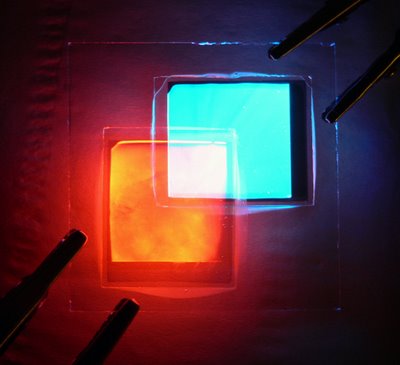
____________________________________
This is a little 3 Button Keyboard that uses programmable OLED screens as buttons. So you can put icons of your favorite apps on their faces, and launch them by punching down. The USB keyboard's little screens can even show dynamic images like live webcam feeds, CPU usage, and the time. And, since there are only three buttons, you'll want to make good use of the 6 presets that you can hotkey through. The screens are 20 by 20mm each, and have a resolution of 96 by 96 pixels. Only a 3fps refresh on those keys, so no video. Sorry. Keys are 30 by 30mm, each.
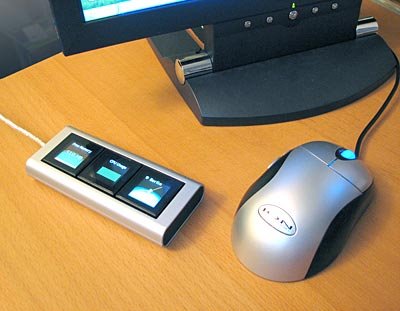
___________________________________________
FOLED, which stands for Flexible Organic Light Emitting Diodes, can be placed on other flexible material like plastic or metallic foil. It offers an improvement over regular LCDs that need to be built on glass substrate. Video at the link below...
http://www.gizmodo.com/gadgets/gadgets/flexible-oled-video-demo-reminds-us-of-the-80s-only-more-flexible-195645.php
___________________________________
Samsung has figured out a way to make HDTVs even thinner by combining OLED and active-matrix LCDs. The innovation eliminates the backlight, the thickest part of a flat panel, thus shaving it down to an iPod nano-esque 12mm thick. The 1600x1200 demo unit's 17-inch screen is shaped in the old-fashioned 4x3 aspect ratio and eeks out a lame 1000:1 contrast ratio. This AMOLED (active-matrix organic light emitting diode) technology is promising, already being used in cellphones and PMPs by Samsung, and it's high time it were scaled up for the big screens.
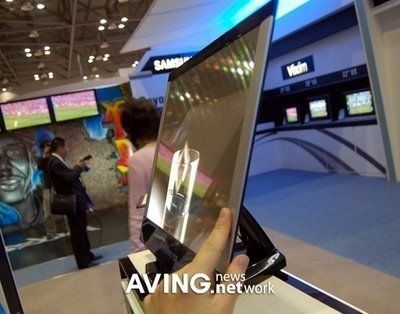
The 'Optimus' keyboard has tiny OLED screens embedded in each key, allowing it to display context information on the fly. In Photoshop? You've got Photoshop icons, complete with alt functions.

___________________________________________
German scientists have figured out how to make organic LEDs that are transparent.With transparency, a display could be illuminated from the back or front. That means the OLEDs could be embedded into laminated glass—that means a car windshield, or even the windows in an office building, could offer a clear view out but also be turned into display panels when needed.

____________________________________
This is a little 3 Button Keyboard that uses programmable OLED screens as buttons. So you can put icons of your favorite apps on their faces, and launch them by punching down. The USB keyboard's little screens can even show dynamic images like live webcam feeds, CPU usage, and the time. And, since there are only three buttons, you'll want to make good use of the 6 presets that you can hotkey through. The screens are 20 by 20mm each, and have a resolution of 96 by 96 pixels. Only a 3fps refresh on those keys, so no video. Sorry. Keys are 30 by 30mm, each.

___________________________________________
FOLED, which stands for Flexible Organic Light Emitting Diodes, can be placed on other flexible material like plastic or metallic foil. It offers an improvement over regular LCDs that need to be built on glass substrate. Video at the link below...
http://www.gizmodo.com/gadgets/gadgets/flexible-oled-video-demo-reminds-us-of-the-80s-only-more-flexible-195645.php
___________________________________
Samsung has figured out a way to make HDTVs even thinner by combining OLED and active-matrix LCDs. The innovation eliminates the backlight, the thickest part of a flat panel, thus shaving it down to an iPod nano-esque 12mm thick. The 1600x1200 demo unit's 17-inch screen is shaped in the old-fashioned 4x3 aspect ratio and eeks out a lame 1000:1 contrast ratio. This AMOLED (active-matrix organic light emitting diode) technology is promising, already being used in cellphones and PMPs by Samsung, and it's high time it were scaled up for the big screens.

E Ink and LG Phillips:
Less than 300 microns thick, the paper-white display is as thin and flexible as construction paper. With a 10.1" diagonal, the prototype achieves SVGA (600x800) resolution at 100 pixels per inch and has a 10:1 contrast ratio with 4 levels of grayscale. E Ink® Imaging Film is a novel display material that looks like printed ink on paper and has been designed for use in paper-like electronic displays. Like paper, the material can be flexed and rolled. As an additional benefit, the E Ink Imaging Film uses 100 times less energy than a liquid crystal display because it can hold an image without power and without a backlight. They are 80% thinner and lighter than glass displays, and they do not break like glass displays.

Less than 300 microns thick, the paper-white display is as thin and flexible as construction paper. With a 10.1" diagonal, the prototype achieves SVGA (600x800) resolution at 100 pixels per inch and has a 10:1 contrast ratio with 4 levels of grayscale. E Ink® Imaging Film is a novel display material that looks like printed ink on paper and has been designed for use in paper-like electronic displays. Like paper, the material can be flexed and rolled. As an additional benefit, the E Ink Imaging Film uses 100 times less energy than a liquid crystal display because it can hold an image without power and without a backlight. They are 80% thinner and lighter than glass displays, and they do not break like glass displays.
http://www.eink.com/press/releases/pr87.html

11.13.2006
Plumbing just ain’t what it used to be
By Terry Swisher, Chief Plumbing Inspector
Just when you think you’ve seen it all, some-
one comes up with a new idea and poof,
everything you thought you knew is “old hat.â€
Now nanotechnology is being applied to
plumbing products.
I better explain what nanotechnology is. This
is a subject most construction folks don’t talk
about during coffee breaks. But soon, they will.
In 1981 a scientist named K. E. Drexl pub-
lished a paper, “Molecular engineering: An
approach to the development of general capa-
bilities for molecular manipulation.†He
explained his ideas about working with materi-
als on a molecular level. Instantly, the scientific
world recognized the potential for this technol-
ogy to control matter on an atomic level. The
idea is to construct materials and objects so
perfectly put together on an atomic scale that
they do not exist in nature. Nature, bless its
heart, makes mistakes called impurities, flaws,
or imperfections, but not nanotechnology. The
implications and applications of this technology
are staggering.
What does this have to do with plumbing?
Plumbing is generally designed to be sanitary
and to protect public health, and applications
of nanotechnology make it much more so. Re-
member, the following are actual products and
not science fiction:
A German company now known as Nanogate
Technologies GmbH, developed a product with
Duravit AG called Wondergliss®. Duravit is a
German plumbing-fixture manufacturer and is
well known for its ceramics. Wondergliss® is a
micro-smooth coating fired over the traditional
ceramic glazing. This surface is so smooth that
dirt, germs, and fungus cannot stick to it. In
fact, the surface is so smooth that water beads
up and runs off without lime and soaps being
able to hold onto it. It stays incredibly clean for
a long time. When you do have to clean the
surface, you just wipe it with a paper towel. If
you have ever scrubbed lime and soap depos-
its from ceramic tile, you know what this
means. Duravit also manufactures plumbing
fixtures with this surface. Other companies are
applying the same concepts to metal surfaces
for plumbing components and other uses.
Another nanotechnology product is Microban®,
manufactured by Microban International. The
technology started when W. L. Morrison was on
the telephone talking with a doctor about de-
signing something to protect plastic medical
products from bacteria and other bad “nasties.â€
Morrison held the acrylic telephone in his hand
and thought about contamination of pay phones
and how to clean them up. His idea led to the
first antimicrobial polymeric, a plastic that is
germ-resistant and even resistant to molds,
yeast, and mildew.
Today this technology is used in more than
450 products, including those for the kitchen
and bath and textiles, toys, cleaning supplies,
paints, caulking, medical products and, of
course, plumbing fixtures. It’s used by several
manufacturers of plastic spas, tubs, and
showers available in Oregon.
Microban® is nanotechnology because the
antibacterial agent is incorporated during
manufacturing into the molecular structure of
plastics and synthetic fibers to resist bacteria,
fungus, molds, and yeast. It does not rub,
wash, or wear out of the product. The ingredi-
ent is registered with the EPA for many uses
and has been incorporated into several de-
vices registered with the FDA.
It is easy to imagine this technology producing
piping so smooth that it would have little or no
friction loss, which would lead to smaller piping
able to carry many more gallons of water at
the same working pressure as today’s piping.
Or drain pipe so smooth and slippery that it
cannot plug up. Or pipes that never wear out.
Someday, entire plumbing systems may fol-
low nature’s design of a living system. Imag-
ine a water piping system that could change
its dimensions based on the flow demand and
available pressure like our own circulatory
systems. Septic tanks could generate elec-
tricity as they digest waste. Plumbers in the
future will no doubt look back and wonder
how we got by with such primitive materials
and tools. Truly, plumbing ain’t what it used to
be — and it never will be again.
http://72.14.209.104/search?q=cache:rH1zWdQIq4gJ:www.cbs.state.or.us/bcd/pub/codelink/2004/01_02.pdf+microban+nanotechnology&hl=en&gl=us&ct=clnk&cd=1&client=firefox-a
By Terry Swisher, Chief Plumbing Inspector
Just when you think you’ve seen it all, some-
one comes up with a new idea and poof,
everything you thought you knew is “old hat.â€
Now nanotechnology is being applied to
plumbing products.
I better explain what nanotechnology is. This
is a subject most construction folks don’t talk
about during coffee breaks. But soon, they will.
In 1981 a scientist named K. E. Drexl pub-
lished a paper, “Molecular engineering: An
approach to the development of general capa-
bilities for molecular manipulation.†He
explained his ideas about working with materi-
als on a molecular level. Instantly, the scientific
world recognized the potential for this technol-
ogy to control matter on an atomic level. The
idea is to construct materials and objects so
perfectly put together on an atomic scale that
they do not exist in nature. Nature, bless its
heart, makes mistakes called impurities, flaws,
or imperfections, but not nanotechnology. The
implications and applications of this technology
are staggering.
What does this have to do with plumbing?
Plumbing is generally designed to be sanitary
and to protect public health, and applications
of nanotechnology make it much more so. Re-
member, the following are actual products and
not science fiction:
A German company now known as Nanogate
Technologies GmbH, developed a product with
Duravit AG called Wondergliss®. Duravit is a
German plumbing-fixture manufacturer and is
well known for its ceramics. Wondergliss® is a
micro-smooth coating fired over the traditional
ceramic glazing. This surface is so smooth that
dirt, germs, and fungus cannot stick to it. In
fact, the surface is so smooth that water beads
up and runs off without lime and soaps being
able to hold onto it. It stays incredibly clean for
a long time. When you do have to clean the
surface, you just wipe it with a paper towel. If
you have ever scrubbed lime and soap depos-
its from ceramic tile, you know what this
means. Duravit also manufactures plumbing
fixtures with this surface. Other companies are
applying the same concepts to metal surfaces
for plumbing components and other uses.
Another nanotechnology product is Microban®,
manufactured by Microban International. The
technology started when W. L. Morrison was on
the telephone talking with a doctor about de-
signing something to protect plastic medical
products from bacteria and other bad “nasties.â€
Morrison held the acrylic telephone in his hand
and thought about contamination of pay phones
and how to clean them up. His idea led to the
first antimicrobial polymeric, a plastic that is
germ-resistant and even resistant to molds,
yeast, and mildew.
Today this technology is used in more than
450 products, including those for the kitchen
and bath and textiles, toys, cleaning supplies,
paints, caulking, medical products and, of
course, plumbing fixtures. It’s used by several
manufacturers of plastic spas, tubs, and
showers available in Oregon.
Microban® is nanotechnology because the
antibacterial agent is incorporated during
manufacturing into the molecular structure of
plastics and synthetic fibers to resist bacteria,
fungus, molds, and yeast. It does not rub,
wash, or wear out of the product. The ingredi-
ent is registered with the EPA for many uses
and has been incorporated into several de-
vices registered with the FDA.
It is easy to imagine this technology producing
piping so smooth that it would have little or no
friction loss, which would lead to smaller piping
able to carry many more gallons of water at
the same working pressure as today’s piping.
Or drain pipe so smooth and slippery that it
cannot plug up. Or pipes that never wear out.
Someday, entire plumbing systems may fol-
low nature’s design of a living system. Imag-
ine a water piping system that could change
its dimensions based on the flow demand and
available pressure like our own circulatory
systems. Septic tanks could generate elec-
tricity as they digest waste. Plumbers in the
future will no doubt look back and wonder
how we got by with such primitive materials
and tools. Truly, plumbing ain’t what it used to
be — and it never will be again.
http://72.14.209.104/search?q=cache:rH1zWdQIq4gJ:www.cbs.state.or.us/bcd/pub/codelink/2004/01_02.pdf+microban+nanotechnology&hl=en&gl=us&ct=clnk&cd=1&client=firefox-a
11.06.2006
Aerogel in Buildings:
UC Davis Medical Center,Central PlantDavis, CAArchitect: Siegal/Diamond

Kalcurve™Merry Hill CentreWest Midlands, UKArchitect: INC Design

Tualatin Hills Park & Recreation Athletic CenterBeaverton, ORArchitect: BOORA Architects, Inc.

City & Islington CollegeLondon, UKArchitect: Devereux & Partners

Orlando Sanford Airport TerminalSanford, FLArchitect: Blankenship McMillan Architects

Applications:
Clearspan Skyroofs™ & Structures
Walkways & Canopies
Skyroofs™ - Custom
Skylights - Pre-Engineered
Skylights - Standard
Window Replacement
Panel Unit Wall Curtainwalls
Wall Systems
UC Davis Medical Center,Central PlantDavis, CAArchitect: Siegal/Diamond

Kalcurve™Merry Hill CentreWest Midlands, UKArchitect: INC Design

Tualatin Hills Park & Recreation Athletic CenterBeaverton, ORArchitect: BOORA Architects, Inc.

City & Islington CollegeLondon, UKArchitect: Devereux & Partners

Orlando Sanford Airport TerminalSanford, FLArchitect: Blankenship McMillan Architects

Applications:
Clearspan Skyroofs™ & Structures
Walkways & Canopies
Skyroofs™ - Custom
Skylights - Pre-Engineered
Skylights - Standard
Window Replacement
Panel Unit Wall Curtainwalls
Wall Systems
10.26.2006
NanoNuno Umbrella:
Even after heavy rain, just give this umbrella a good shake and it will be clean and dry right away. Even in light-coloured fabric, it will keep looking immaculate for years. The secret: Innovative nanotechnology. Modelled on a natural phenomenon – the lotus leaf. In nature, a fascinating effect is produced by the microscopic, rough nanostructure on the leaves of the lotus plant: Dirt and moisture simply roll off. This is because there is a much smaller surface area to which things can stick than on a smooth surface.
http://www.proidee.co.uk/shop/SID_vgThzuGoexUuvTmwJhzj7adSkBB2/F=produkt_formular/P=02_GB_HPN570366/K=02_GB_120057


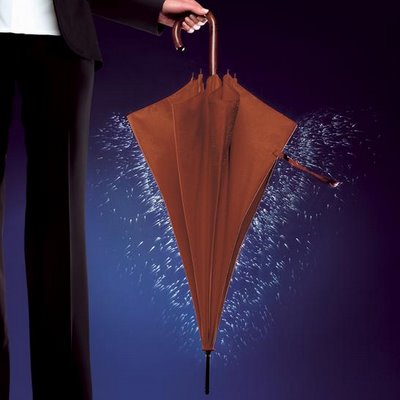
Even after heavy rain, just give this umbrella a good shake and it will be clean and dry right away. Even in light-coloured fabric, it will keep looking immaculate for years. The secret: Innovative nanotechnology. Modelled on a natural phenomenon – the lotus leaf. In nature, a fascinating effect is produced by the microscopic, rough nanostructure on the leaves of the lotus plant: Dirt and moisture simply roll off. This is because there is a much smaller surface area to which things can stick than on a smooth surface.
http://www.proidee.co.uk/shop/SID_vgThzuGoexUuvTmwJhzj7adSkBB2/F=produkt_formular/P=02_GB_HPN570366/K=02_GB_120057



Computer Circuit:
Nanoscience takes one more step forward as the first single-molecule computer circuit was just built by United States researchers. Take a look at the picture here and you'll see the circuit which is so tiny it measures less than a fifth of the width of a human hair. It was assembled on a single carbon nanotube, and even though it can only achieve a poky speed of 50MHz, that's 100,000 times faster than any other devices that have ever been made with carbon nanotubes.
http://news.bbc.co.uk/1/hi/sci/tech/4839088.stm

Nanoscience takes one more step forward as the first single-molecule computer circuit was just built by United States researchers. Take a look at the picture here and you'll see the circuit which is so tiny it measures less than a fifth of the width of a human hair. It was assembled on a single carbon nanotube, and even though it can only achieve a poky speed of 50MHz, that's 100,000 times faster than any other devices that have ever been made with carbon nanotubes.
http://news.bbc.co.uk/1/hi/sci/tech/4839088.stm

Noise sensitive nanosensors:
Carbon nanotubes are minute pipes made of graphite, the form of carbon familiar in pencil lead. Carbon atoms in graphite naturally organize themselves into two-dimensional sheets or lattices in a chicken wire or beehive like hexagonal lattice. Modern fabrication techniques can roll up such sheets into ultra thin tubes 100,000 times smaller than a human hair -- less than 2 nanometers in diameter. Twisting such tubes can drastically change their electronic properties, from conductors, to semiconductors. A main focus of interest now is their use in flat panel displays.
The experiment used semiconductor nanotubes two nanometers in diameter and 3,000-5000 nanometers long But when the experimenters added noise -- random electrical activity -- generated by several alternate methods, the signal came through. The noise makes the fragmentary picture suddenly recognizable. Kosko believes that increased awareness of the stochastic resonance phenomenon can aid designers of communications, including especially modern spread-spectrum devices, which often rely on an array of faint signals. "Nano-device designers can individually tailors nanotubes to specific signals and then deploy them in numbers -- rather like pipe organs tuned to different notes -- to take advantage of the SR-effects, " he said.
http://www.eurekalert.org/pub_releases/2003-12/uosc-tst121603.php

Carbon nanotubes are minute pipes made of graphite, the form of carbon familiar in pencil lead. Carbon atoms in graphite naturally organize themselves into two-dimensional sheets or lattices in a chicken wire or beehive like hexagonal lattice. Modern fabrication techniques can roll up such sheets into ultra thin tubes 100,000 times smaller than a human hair -- less than 2 nanometers in diameter. Twisting such tubes can drastically change their electronic properties, from conductors, to semiconductors. A main focus of interest now is their use in flat panel displays.
The experiment used semiconductor nanotubes two nanometers in diameter and 3,000-5000 nanometers long But when the experimenters added noise -- random electrical activity -- generated by several alternate methods, the signal came through. The noise makes the fragmentary picture suddenly recognizable. Kosko believes that increased awareness of the stochastic resonance phenomenon can aid designers of communications, including especially modern spread-spectrum devices, which often rely on an array of faint signals. "Nano-device designers can individually tailors nanotubes to specific signals and then deploy them in numbers -- rather like pipe organs tuned to different notes -- to take advantage of the SR-effects, " he said.
http://www.eurekalert.org/pub_releases/2003-12/uosc-tst121603.php

Aerogel
Aerogel is a low-density solid-state material derived from gel in which the liquid component of the gel has been replaced with gas. The result is an extremely low density solid with several remarkable properties, most notably its effectiveness as an insulator. It is nicknamed frozen smoke, solid smoke or blue smoke due to its semi-transparent nature and the way light scatters in the material; however it feels like styrofoam to the touch. At the nanoscale, an aerogel structurally resembles a sponge and is composed of a network of interconnected nanoparticles. It is very strong structurally, able to hold over 2000 times its own weight.
Aerogels are remarkable thermal insulators because they almost nullify three methods of heat transfer (convection, conduction, and radiation). They are good convective inhibitors because air cannot circulate throughout the lattice. Silica aerogel is an especially good conductive insulator because silica is a poor conductor of heat. (Metallic aerogel, on the other hand, would be a better heat conductor.) Carbon aerogel is a good radiative insulator because carbon absorbs the infrared radiation that transfers heat. The most insulative aerogel is silica aerogel with carbon added to it.
http://en.wikipedia.org/wiki/Aerogel
Aspen Aerogels’ building and construction solutions provide the highest R values available today with extremely slim profiles. Whether it is for new construction or renovation, homes or commercial buildings, Aspen Aerogels’ insulation can provide a more thermally efficient solution. Aerogels’ provide noise insulation properties (tanks, space craft, boats). For the first time, aerogels can be handled and installed like any other thermal or acoustic insulation. Aspen made the material effective for window and skylight insulation, non-flammable building insulation, and inexpensive firewall insulation that will withstand fires in homes and buildings, and also assist in the prevention of forest fires.
http://www.aerogel.com/markets/building.html
kalwall: many photos
http://www.kalwall.com/main.htm
supersky systems:
http://www.supersky.com/
purchasable product information
http://www.supersky.com/nanocatalog/nanogelcatalog.pdf
cabot: good information
http://w1.cabot-corp.com/controller.jsp?N=23+4294967102+3153+3183&entry=product
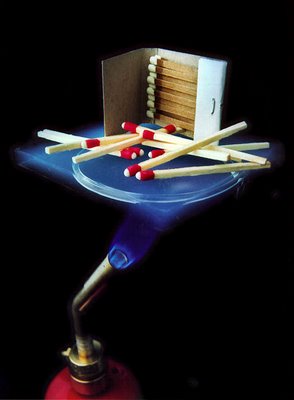
Aerogel is a low-density solid-state material derived from gel in which the liquid component of the gel has been replaced with gas. The result is an extremely low density solid with several remarkable properties, most notably its effectiveness as an insulator. It is nicknamed frozen smoke, solid smoke or blue smoke due to its semi-transparent nature and the way light scatters in the material; however it feels like styrofoam to the touch. At the nanoscale, an aerogel structurally resembles a sponge and is composed of a network of interconnected nanoparticles. It is very strong structurally, able to hold over 2000 times its own weight.
Aerogels are remarkable thermal insulators because they almost nullify three methods of heat transfer (convection, conduction, and radiation). They are good convective inhibitors because air cannot circulate throughout the lattice. Silica aerogel is an especially good conductive insulator because silica is a poor conductor of heat. (Metallic aerogel, on the other hand, would be a better heat conductor.) Carbon aerogel is a good radiative insulator because carbon absorbs the infrared radiation that transfers heat. The most insulative aerogel is silica aerogel with carbon added to it.
http://en.wikipedia.org/wiki/Aerogel
Aspen Aerogels’ building and construction solutions provide the highest R values available today with extremely slim profiles. Whether it is for new construction or renovation, homes or commercial buildings, Aspen Aerogels’ insulation can provide a more thermally efficient solution. Aerogels’ provide noise insulation properties (tanks, space craft, boats). For the first time, aerogels can be handled and installed like any other thermal or acoustic insulation. Aspen made the material effective for window and skylight insulation, non-flammable building insulation, and inexpensive firewall insulation that will withstand fires in homes and buildings, and also assist in the prevention of forest fires.
http://www.aerogel.com/markets/building.html
kalwall: many photos
http://www.kalwall.com/main.htm
supersky systems:
http://www.supersky.com/
purchasable product information
http://www.supersky.com/nanocatalog/nanogelcatalog.pdf
cabot: good information
http://w1.cabot-corp.com/controller.jsp?N=23+4294967102+3153+3183&entry=product

Self-healing concrete
When the material cracks, the microcapsules rupture and release the healing agent into the damaged region through capillary action. As the healing agent contacts the embedded catalyst, polymerization is initiated which then bonds the crack face closed."
In recent fracture tests, the self-healed composites recovered as much as 75 percent of their original strength. This technology could increase the lifetime of structural components, perhaps by as much as two or three times
http://www.sciencedaily.com/releases/2001/02/010215075006.htm

When the material cracks, the microcapsules rupture and release the healing agent into the damaged region through capillary action. As the healing agent contacts the embedded catalyst, polymerization is initiated which then bonds the crack face closed."
In recent fracture tests, the self-healed composites recovered as much as 75 percent of their original strength. This technology could increase the lifetime of structural components, perhaps by as much as two or three times
http://www.sciencedaily.com/releases/2001/02/010215075006.htm

10.22.2006
10.18.2006
Samsung nano-silver frig:
http://www.samsung.com/au/products/refrigerators/premiumsbs/srs700dss.asp#silver_nano
Samsung refrigerator
Samsung's Silver Nano TechnologyFrom ancient times, silver has been used for medicines and household goods because the non-toxic precious metal has the power to sanitise and deodorise. Recent advancements in technology and increased consumer demand for health-promoting products are giving rise to many new items that use silver for a highly effective anti-bacterial effect. Samsung is now applying nano-technology to bond silver atoms, creating the innovative Silver Nano Health System, which provides strong anti-bacterial and deodorizing effects. Because propagation of fungi and bacteria inside refrigerators is prevented, you can always enjoy the freshest food.
Samsung's Silver Nano TechnologyFrom ancient times, silver has been used for medicines and household goods because the non-toxic precious metal has the power to sanitise and deodorise. Recent advancements in technology and increased consumer demand for health-promoting products are giving rise to many new items that use silver for a highly effective anti-bacterial effect. Samsung is now applying nano-technology to bond silver atoms, creating the innovative Silver Nano Health System, which provides strong anti-bacterial and deodorizing effects. Because propagation of fungi and bacteria inside refrigerators is prevented, you can always enjoy the freshest food.
Samsung's Silver Nano TechnologyFrom ancient times, silver has been used for medicines and household goods because the non-toxic precious metal has the power to sanitise and deodorise. Recent advancements in technology and increased consumer demand for health-promoting products are giving rise to many new items that use silver for a highly effective anti-bacterial effect. Samsung is now applying nano-technology to bond silver atoms, creating the innovative Silver Nano Health System, which provides strong anti-bacterial and deodorizing effects. Because propagation of fungi and bacteria inside refrigerators is prevented, you can always enjoy the freshest food.
http://www.samsung.com/au/products/refrigerators/premiumsbs/srs700dss.asp#silver_nano
Samsung refrigerator
Samsung's Silver Nano TechnologyFrom ancient times, silver has been used for medicines and household goods because the non-toxic precious metal has the power to sanitise and deodorise. Recent advancements in technology and increased consumer demand for health-promoting products are giving rise to many new items that use silver for a highly effective anti-bacterial effect. Samsung is now applying nano-technology to bond silver atoms, creating the innovative Silver Nano Health System, which provides strong anti-bacterial and deodorizing effects. Because propagation of fungi and bacteria inside refrigerators is prevented, you can always enjoy the freshest food.
Samsung's Silver Nano TechnologyFrom ancient times, silver has been used for medicines and household goods because the non-toxic precious metal has the power to sanitise and deodorise. Recent advancements in technology and increased consumer demand for health-promoting products are giving rise to many new items that use silver for a highly effective anti-bacterial effect. Samsung is now applying nano-technology to bond silver atoms, creating the innovative Silver Nano Health System, which provides strong anti-bacterial and deodorizing effects. Because propagation of fungi and bacteria inside refrigerators is prevented, you can always enjoy the freshest food.
Samsung's Silver Nano TechnologyFrom ancient times, silver has been used for medicines and household goods because the non-toxic precious metal has the power to sanitise and deodorise. Recent advancements in technology and increased consumer demand for health-promoting products are giving rise to many new items that use silver for a highly effective anti-bacterial effect. Samsung is now applying nano-technology to bond silver atoms, creating the innovative Silver Nano Health System, which provides strong anti-bacterial and deodorizing effects. Because propagation of fungi and bacteria inside refrigerators is prevented, you can always enjoy the freshest food.
Buildings with self-cleaning concrete:
http://www.concretedecor.net/All_Access/504/CD504_New_Tech2.cfm
TX Millennium, Italcementi Group, photocatalystic technology, self-cleaning concrete, Richard Meier Jubilee Church, Rome, (Vegas hotel guest room treated, 30% less odors, used in Japan too), titanium dioxide, HPLV sprayer btw .3-.8 mm producing a fine mist evenly on the surface, semiconductor activated by energy light separates electrons, casuing chemical reductions and oxidations that decompose organic compounds, can buy photocatalystic antibacterial deodorant pantyhose in Japan, (will this cause build up of materials in environment)
http://www.technologyreview.com/read_article.aspx?id=14569
Marunouchi Building in downtown Tokyo, are covered with photocatalytic tiles to reduce discoloring from pollution
In a test in 2003, the company coated 75,000 square feet (6,750 square meters) of road surface on the outskirts of Milan with photocatalytic cement. It found nitrogen oxide levels were reduced by up to 60 percent, depending on weather conditions
Cost is another issue. Galimberti said Italcementi's products are 30 percent to 40 percent more expensive than regular concrete, and using the external air quality as a selling point doesn't necessarily appeal to builders with tight budgets. The company's sales pitch is that self-cleaning materials will save money in the long run.


http://www.concretedecor.net/All_Access/504/CD504_New_Tech2.cfm
TX Millennium, Italcementi Group, photocatalystic technology, self-cleaning concrete, Richard Meier Jubilee Church, Rome, (Vegas hotel guest room treated, 30% less odors, used in Japan too), titanium dioxide, HPLV sprayer btw .3-.8 mm producing a fine mist evenly on the surface, semiconductor activated by energy light separates electrons, casuing chemical reductions and oxidations that decompose organic compounds, can buy photocatalystic antibacterial deodorant pantyhose in Japan, (will this cause build up of materials in environment)
http://www.technologyreview.com/read_article.aspx?id=14569
Marunouchi Building in downtown Tokyo, are covered with photocatalytic tiles to reduce discoloring from pollution
In a test in 2003, the company coated 75,000 square feet (6,750 square meters) of road surface on the outskirts of Milan with photocatalytic cement. It found nitrogen oxide levels were reduced by up to 60 percent, depending on weather conditions
Cost is another issue. Galimberti said Italcementi's products are 30 percent to 40 percent more expensive than regular concrete, and using the external air quality as a selling point doesn't necessarily appeal to builders with tight budgets. The company's sales pitch is that self-cleaning materials will save money in the long run.


Nanofibers
Deliver dna to cells like thin needles
nanofibers can help induce neurons to reconnect and restore vision in the process, at least in hamsters (also repair damaged brain connections)
Nordson has developed patented technology for the use of polymeric nanofibers in nonwoven fabrics. In this capacity, nanofiber technology has been researched as a novel scaffold for cell growth and also offers unique capabilities to control pore size. Future biomedical applications may include artificial organs, tissue engineering, blood vessels, drug delivery systems and wound dressing. Nordson's nanophase system can spray up to five meters. Applications include clean room filtration, medical/surgical masks with low-pressure drops, gowns, drapes, wraps, and other products with superior barrier properties.
The self-healing fibers are primarily fluid-filled hollow capillaries that contain a bonding agent that, when released, slow or prevent the spread of a crack through the concrete matrix. Self-healing fibers have also been proposed as a strategy for addressing debonding events between the concrete matrix and reinforcing bars.
Deliver dna to cells like thin needles
nanofibers can help induce neurons to reconnect and restore vision in the process, at least in hamsters (also repair damaged brain connections)
Nordson has developed patented technology for the use of polymeric nanofibers in nonwoven fabrics. In this capacity, nanofiber technology has been researched as a novel scaffold for cell growth and also offers unique capabilities to control pore size. Future biomedical applications may include artificial organs, tissue engineering, blood vessels, drug delivery systems and wound dressing. Nordson's nanophase system can spray up to five meters. Applications include clean room filtration, medical/surgical masks with low-pressure drops, gowns, drapes, wraps, and other products with superior barrier properties.
The self-healing fibers are primarily fluid-filled hollow capillaries that contain a bonding agent that, when released, slow or prevent the spread of a crack through the concrete matrix. Self-healing fibers have also been proposed as a strategy for addressing debonding events between the concrete matrix and reinforcing bars.
Nanospheres
http://www.sandia.gov/media/nanos.htm
The durable silica spheres, which range in size from 2 to 50 nanometers, form in a few seconds, are small enough to be introduced into the body, and have uniform pores that could enable controlled release of drugs. The spheres can absorb organic and inorganic substances including small particles of iron, which means they can be controlled by magnets and the contents released as needed. Lastly, the Sandia nanospheres may be useful as coatings on silicon chips whose increasingly tiny circuits require a medium that has a lower dielectric constant and stores less heat.
Mostly medical applications (micro electronics, environ friendly fuel- Hollow nanospheres crafted from molybdenum disulfide could serve as a superior catalyst for removing sulfur-containing compounds from gasoline and other fossil fuels.)
Nanofibers
(automotive, aeronautic, aerospace, engineering)
One of my favorite posts to WorldChanging has to be Curing Cancer, from July, 2004. In brief, Rice University researchers found that flooding a tumor with gold nanospheres then illuminating the tumor with an infrared laser (through the skin, which remains undamaged) would result in the tumor being completely eliminated. Now Stanford University researchers have accomplished a very similar feat, this time using carbon nanotubes rather than gold nanospheres. The principle is the same: inundate the tumor with the material, illuminate the tumor with a low-power laser, cook the tumor into nonexistence without harming nearby healthy tissue.
http://www.sandia.gov/media/nanos.htm
The durable silica spheres, which range in size from 2 to 50 nanometers, form in a few seconds, are small enough to be introduced into the body, and have uniform pores that could enable controlled release of drugs. The spheres can absorb organic and inorganic substances including small particles of iron, which means they can be controlled by magnets and the contents released as needed. Lastly, the Sandia nanospheres may be useful as coatings on silicon chips whose increasingly tiny circuits require a medium that has a lower dielectric constant and stores less heat.
Mostly medical applications (micro electronics, environ friendly fuel- Hollow nanospheres crafted from molybdenum disulfide could serve as a superior catalyst for removing sulfur-containing compounds from gasoline and other fossil fuels.)
Nanofibers
(automotive, aeronautic, aerospace, engineering)
One of my favorite posts to WorldChanging has to be Curing Cancer, from July, 2004. In brief, Rice University researchers found that flooding a tumor with gold nanospheres then illuminating the tumor with an infrared laser (through the skin, which remains undamaged) would result in the tumor being completely eliminated. Now Stanford University researchers have accomplished a very similar feat, this time using carbon nanotubes rather than gold nanospheres. The principle is the same: inundate the tumor with the material, illuminate the tumor with a low-power laser, cook the tumor into nonexistence without harming nearby healthy tissue.
Nanorods
http://www.nanointerfacetech.com/Nanotech-nanorods.pdf
Alternative of Carbon Nanotubes for the High Volume Applications: The carbon
nanotubes cost $220,000 per pound which can not be used for improvement in the
strength of the composite materials – a large volume application. In order to provide leapfrog improvement in the strength of nanocomposites and other applications, Nano
Interface Technology, Inc. has developed mesoporous nanorods which can provide
nanorods of diameter 30-32 nm and of length 100-500 nm. These nanorods are
synthesized by company’s proprietary nanotechnology. Nanorods of silica or alumina
can easily be produced at a cost of $20 a pound.
Researchers from Hebrew University in Israel have devised a way to cause semiconductor nanocrystals and tiny amounts of gold to self-assemble into nanoscale dumbbells, chains and tetrapods.
http://www.trnmag.com/Stories/2004/071404/Nanorods_gain_gold_tips_Brief_071404.html
The rods and tetrapods could eventually serve as ultra-small transistors, memory elements, light-emitting elements and sensors in nanoelectronic and optoelectronic circuitry, according to the researchers. The researchers' semiconductor-gold dumbbells, chain links and tetrapods range from 20 to 40 nanometers in length. A nanometer is one millionth of a millimeter, or the size of a row of 10 hydrogen atoms. The ability to grow gold tips on nanoscale bits of semiconductor is a significant step toward solving the difficult manufacturing problem of how to wire such small objects together. The gold tips are bonded to the semiconductor covalently, meaning the gold and semiconductor atoms share one or more electrons; this provides a good electrical contact. The gold provides natural anchor points for connecting semiconductors to electrodes and for self-assembly. The chemical process the researchers used to bind the gold tips to the semiconductors was fairly simple and straightforward, according to the researchers. This concept could be used to fuse nanorods to other metals, including those that are magnetic. The nanorod-gold objects could also lead to materials with new chemical and optical properties, according to the researchers.
Diamond nanorods- harder than diamond, idea to produce on industrial scale
http://www.nanointerfacetech.com/Nanotech-nanorods.pdf
Alternative of Carbon Nanotubes for the High Volume Applications: The carbon
nanotubes cost $220,000 per pound which can not be used for improvement in the
strength of the composite materials – a large volume application. In order to provide leapfrog improvement in the strength of nanocomposites and other applications, Nano
Interface Technology, Inc. has developed mesoporous nanorods which can provide
nanorods of diameter 30-32 nm and of length 100-500 nm. These nanorods are
synthesized by company’s proprietary nanotechnology. Nanorods of silica or alumina
can easily be produced at a cost of $20 a pound.
Researchers from Hebrew University in Israel have devised a way to cause semiconductor nanocrystals and tiny amounts of gold to self-assemble into nanoscale dumbbells, chains and tetrapods.
http://www.trnmag.com/Stories/2004/071404/Nanorods_gain_gold_tips_Brief_071404.html
The rods and tetrapods could eventually serve as ultra-small transistors, memory elements, light-emitting elements and sensors in nanoelectronic and optoelectronic circuitry, according to the researchers. The researchers' semiconductor-gold dumbbells, chain links and tetrapods range from 20 to 40 nanometers in length. A nanometer is one millionth of a millimeter, or the size of a row of 10 hydrogen atoms. The ability to grow gold tips on nanoscale bits of semiconductor is a significant step toward solving the difficult manufacturing problem of how to wire such small objects together. The gold tips are bonded to the semiconductor covalently, meaning the gold and semiconductor atoms share one or more electrons; this provides a good electrical contact. The gold provides natural anchor points for connecting semiconductors to electrodes and for self-assembly. The chemical process the researchers used to bind the gold tips to the semiconductors was fairly simple and straightforward, according to the researchers. This concept could be used to fuse nanorods to other metals, including those that are magnetic. The nanorod-gold objects could also lead to materials with new chemical and optical properties, according to the researchers.
Diamond nanorods- harder than diamond, idea to produce on industrial scale
Nanotubes
http://www.zyvex.com/Products/CNT_FAQs.html#whatareNSprd
Based on Zyvex’s work for NASA in developing composite-in-composite materials, NanoSolve disperses carbon nanotubes into the epoxy matrix to provide stiffer and tougher composite structures. With a tensile strength 5-10 times higher than carbon fibers, nanotubes reinforce the epoxy and make the entire structure significantly stronger.
Yacht:
http://www.synergyachts.com/home.htm
The mast is constructed with high-modulus carbon fiber that is impregnated with NanoSolve enhanced epoxy resin, increasing mast strength without added weight or work in the construction process. The keel foil, the most critical structure of the ship, which runs along the centerline at the bottom of a vessel's hull, is also strengthened with NanoSolve materials. Even the paint on the yacht is enhanced through nanotechnology; Zyvex claims it prevents any marine growth under the waterline of the yacht without the need of toxins.
http://www.personal.reading.ac.uk/~scsharip/tubes.htm
good general info
http://www.zyvex.com/Products/CNT_FAQs.html#whatareNSprd
Based on Zyvex’s work for NASA in developing composite-in-composite materials, NanoSolve disperses carbon nanotubes into the epoxy matrix to provide stiffer and tougher composite structures. With a tensile strength 5-10 times higher than carbon fibers, nanotubes reinforce the epoxy and make the entire structure significantly stronger.
Yacht:
http://www.synergyachts.com/home.htm
The mast is constructed with high-modulus carbon fiber that is impregnated with NanoSolve enhanced epoxy resin, increasing mast strength without added weight or work in the construction process. The keel foil, the most critical structure of the ship, which runs along the centerline at the bottom of a vessel's hull, is also strengthened with NanoSolve materials. Even the paint on the yacht is enhanced through nanotechnology; Zyvex claims it prevents any marine growth under the waterline of the yacht without the need of toxins.
http://www.personal.reading.ac.uk/~scsharip/tubes.htm
good general info
